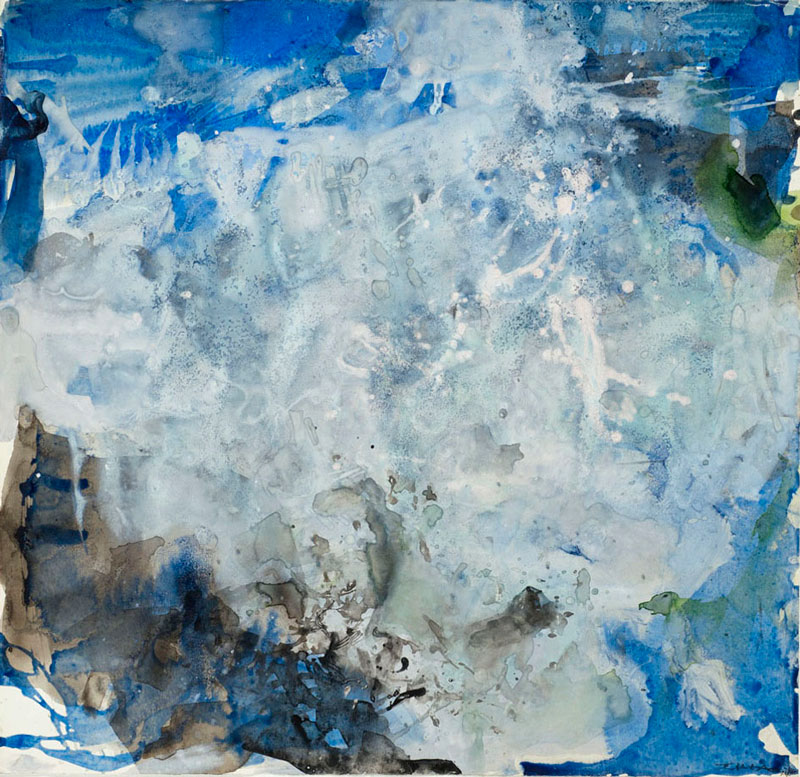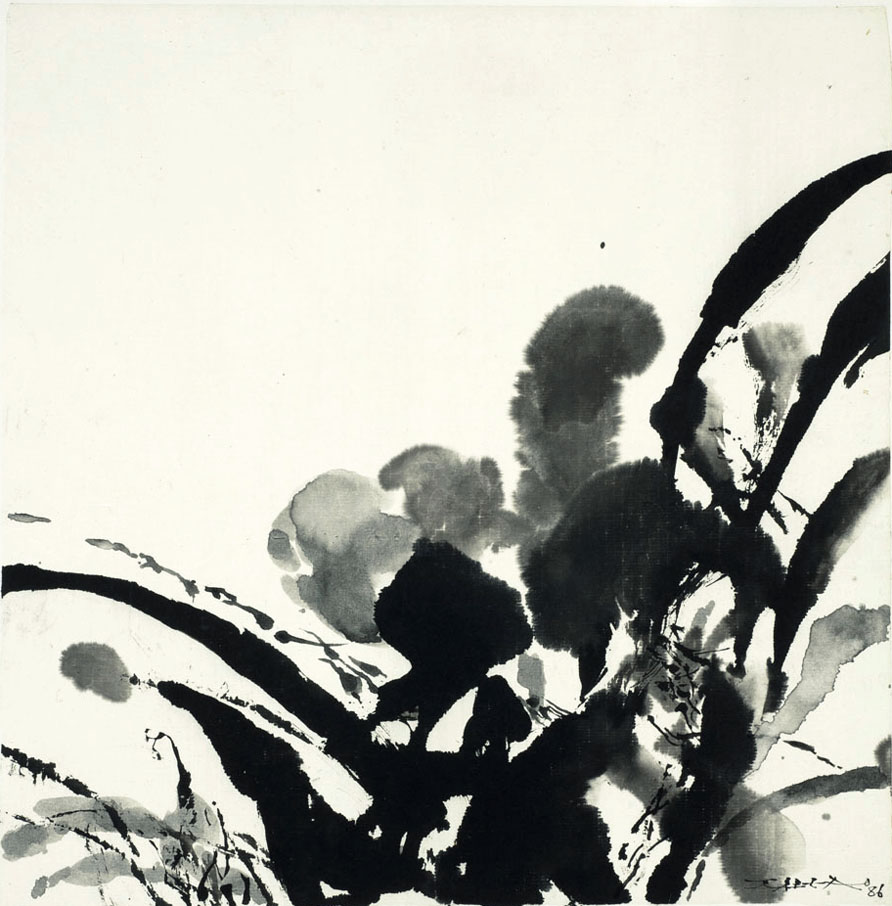ART-PRESENTATION: Zao Wou-Ki,Inks and Watercolours 1948-2009
 Zao Wou-Ki (who adopted the name Zao after 1947) is among the most recognized Chinese artists in the world. Born in Beijing, he attended the National School of Arts in Hangzhou in 1935, where he became a drawing instructor in 1941. In both his schooling and teaching domains, Zao moved freely between Chinese painting techniques and Western-inspired abstract compositions and found a profound affinity between the two traditions.
Zao Wou-Ki (who adopted the name Zao after 1947) is among the most recognized Chinese artists in the world. Born in Beijing, he attended the National School of Arts in Hangzhou in 1935, where he became a drawing instructor in 1941. In both his schooling and teaching domains, Zao moved freely between Chinese painting techniques and Western-inspired abstract compositions and found a profound affinity between the two traditions.
By Dimtris Lempesis
Photo: Galerie kamel mennour Archive
Throughout his long career, Zao’s experimentations in oil on canvas, ink on paper, lithography, engraving, and watercolor, allowed each image to evolve from the next, without imposing boundaries. With 50 works, the exhibition “Inks and watercolours (1948 – 2009)” presents work by Zao Wou-Ki produced between 1948 and 2009. In 1948, Zao moved to Paris and quickly rose to prominence as an abstract gestural painter, befriending other artists such as Alberto Giacometti and Joan Miro. Abstraction was not well received in France during the immediate post–World War II period, as its apparent lack of content or subject were deemed inept to express the brutal realities of the war and its aftermath. But Zao and other artists such as Pierre Soulages and Hans Hartung were determined to show that abstract painting could speak to this very condition through the intuitive language of color and line. To this end, Zao began to paint more boldly than ever, combining expressive lines with deeply saturated color. In the mid-1950s he incorporated Chinese influences more directly, sometimes using actual calligraphy instead of loose and winding brushstrokes. During this period, Zao frequently traveled to New York, where he met Barnett Newman, Franz Kline, and other Abstract Expressionists. Beginning in 1966, Zao Wou-Ki began to explore new forms of expression. He sought inspiration from Western art, adapting into his own creation polyptychs of the Middle Ages and the Renaissance. Those early polyptychs are mostly altarpieces in the forms of diptychs and triptychs that depict scenes of saints and humans. Marked by a strong narrative, they are often eye-catching large-scale works that aptly serve the purpose of proselytizing the Christian faith. In many ways, this genre relates closely to the ancient Asian art of folding screens. Although Zao adopted such a traditional format, he eschewed the straightforward narrative or ornamental qualities of the convention. Instead, he injected his own individual expression and innovative ideas, forging an entirely new path. Later in the 1970s, Zao’s paintings become less focused on line and gesture, striving instead toward an ambient and dreamlike atmosphere in which foreground and background are entirely blurred. By the 1980s, Zao had already rejected such notions as “battle” and “conquer.” Having travelled the world and amassed experience in the art world for two decades, Zao had attained contentment; he had learnt to create art without any restrictions, handling all subject matter with ease.
Info: Curator: Erik Verhagen, Galerie kamel mennour, 47 rue Saint-André-des-Arts, Paris, Duration: 28/2-23/4/19, Days & Hours: Tue-Sat 11:00-19:00 and Galerie kamel mennour, 51 Brook Street, London, Duration: 1/3-23/3/19, Days & Hours: Mon-Sat 10:00-18:00, www.kamelmennour.com





